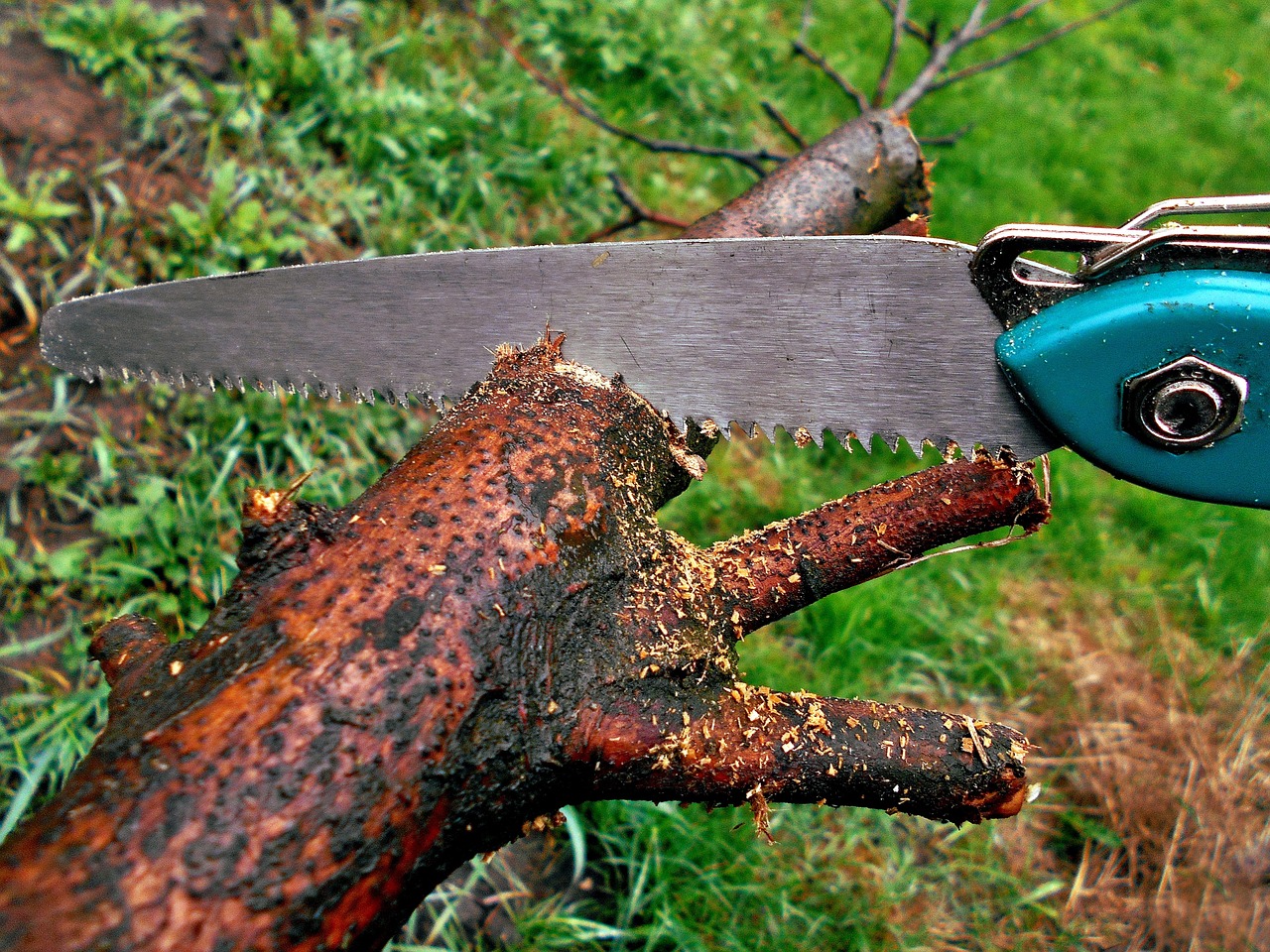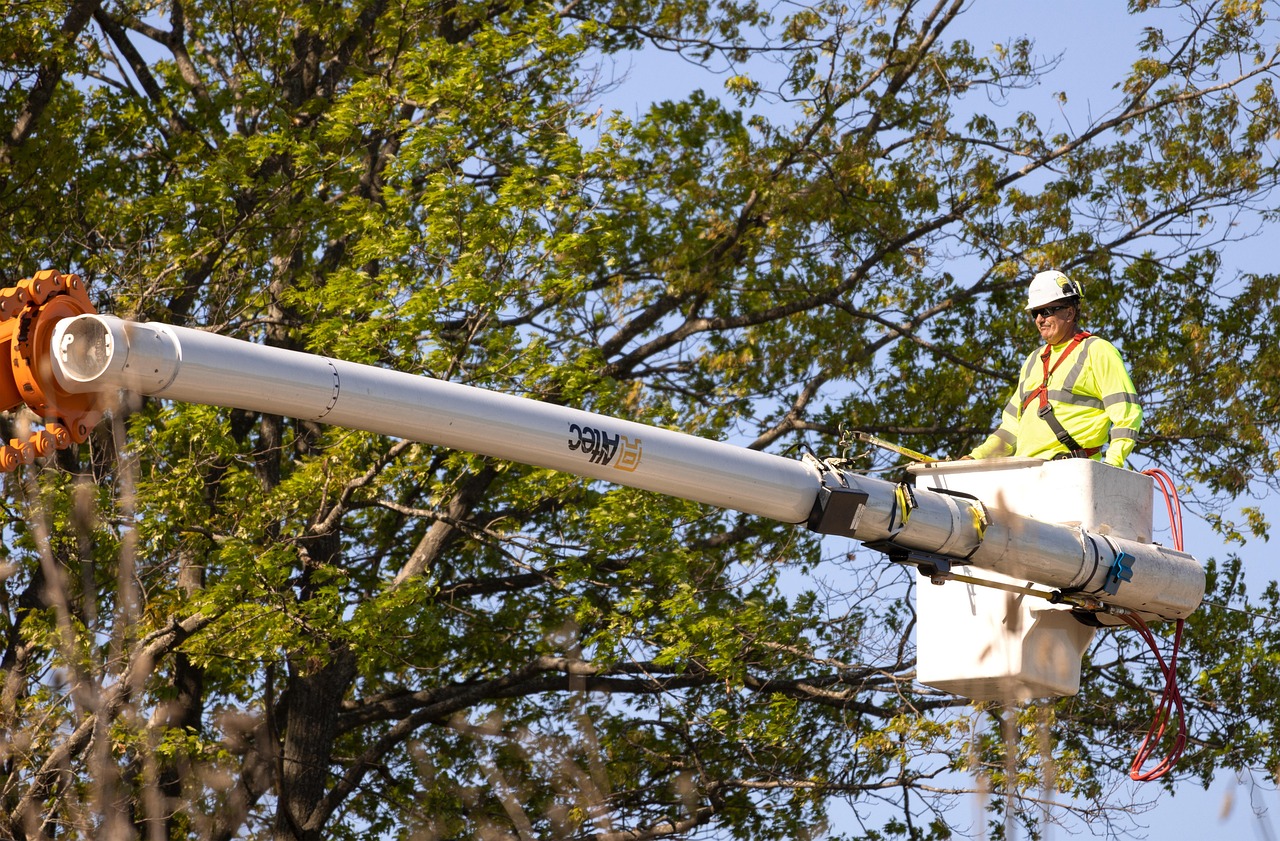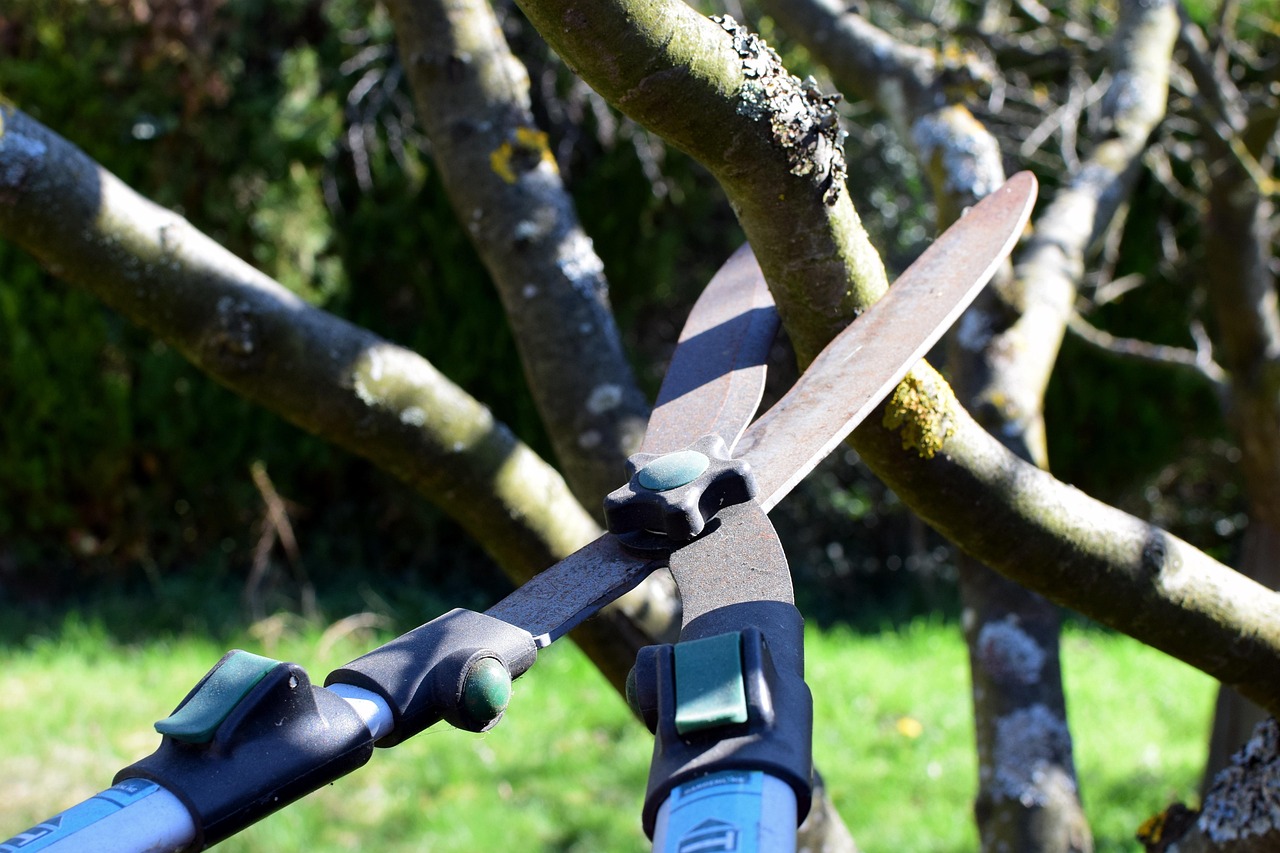Pruning large trees safely without heavy equipment involves using the right tools, proper techniques, and a clear understanding of tree anatomy. Essential methods include using hand saws, loppers, and climbing gear to reach higher branches while ensuring safety and minimizing damage to the tree.
Understanding Tree Pruning
Pruning is a crucial aspect of tree care. It helps maintain the health, appearance, and safety of trees. When it comes to large trees, pruning can be more challenging. However, with the correct approach and tools, it can be done effectively without relying on heavy machinery.

Many property owners may feel intimidated by the idea of pruning large trees. They often believe that heavy equipment is necessary for the job. While this may be true in some cases, smaller tools and techniques can be just as effective and far more manageable for the average person.
The Importance of Pruning
Pruning serves several essential purposes:
- Enhances tree structure and shape
- Removes dead or diseased branches
- Improves air circulation and light penetration
- Prevents potential hazards from falling branches
By understanding these benefits, one can appreciate the necessity of pruning not just for aesthetics but also for tree health and safety.

Choosing the Right Tools
When pruning large trees without heavy equipment, selecting appropriate tools is vital. Here are some essential tools you will need:
- Hand saws: Ideal for larger branches that cannot be cut with loppers.
- Loppers: Perfect for branches up to two inches in diameter.
- Pruning shears: Best for smaller branches and twigs.
- Climbing gear: If the branches are high up, safety harnesses and ropes are necessary.
- Extension poles: Useful for reaching higher branches without climbing.
Having the right tools not only makes the job easier but also significantly increases safety during the pruning process. Always ensure that your tools are sharp and well-maintained to achieve clean cuts.
Safety Precautions
Safety should always be a priority when working with large trees. Here are some vital safety precautions to follow:

- Wear protective gear: This includes gloves, safety goggles, and a hard hat.
- Inspect the area: Look for power lines, unstable ground, or other hazards before beginning.
- Use a spotter: Have someone nearby to assist or alert you of any dangers.
- Work during good weather: Avoid windy or rainy conditions that can increase risks.
By adhering to these precautions, you can significantly reduce the risk of accidents while pruning large trees.
Understanding Tree Anatomy
A good understanding of tree anatomy is beneficial when planning your pruning strategy. Trees consist of several parts, each serving a unique function:
| Part of Tree | Description |
|---|---|
| Crown | The upper part of the tree, including branches and leaves. |
| Trunk | The main stem that supports the crown and connects it to the root system. |
| Branches | The limbs that extend from the trunk and support leaves. |
| Roots | The underground part that anchors the tree and absorbs water and nutrients. |
This knowledge allows you to make informed decisions about which branches to prune. Proper cuts can help promote healthy growth while minimizing damage to the tree.

Techniques for Pruning Large Trees
Once you have gathered your tools and understood safety measures, you can begin pruning your large tree. Here are some effective techniques:
- The three-cut method: This technique prevents bark tearing when removing large branches. The first cut should be made under the branch to create a notch. The second cut should be made on top of the branch to remove it fully. Finally, make a third cut at the branch collar to finish.
- Crown thinning: This involves selectively removing branches to improve light penetration and air circulation without altering the overall shape of the tree.
- Crown reduction: This technique reduces the size of a tree by cutting back leaders or large branches, allowing for better structural integrity.
Using these techniques ensures that your pruning is both effective and safe. Remember to assess each branch’s health before deciding to cut it away. Proper pruning can encourage new growth and improve the overall health of your tree.
Timing Your Pruning
The timing of your pruning activities plays a significant role in the health and growth of large trees. Different species of trees have varying growth patterns, and understanding these can help you determine the best times to prune. Generally, trees are pruned during their dormant season, which is usually late winter to early spring.
Reasons for Seasonal Pruning
Pruning during the dormant season offers several advantages:
- Reduced Stress: Trees are less stressed when pruned while dormant. This allows them to heal more efficiently.
- Better Visibility: Without leaves, it is easier to see the structure of the tree and identify which branches need attention.
- Minimized Pest Activity: Many pests and diseases are less active during the winter months, reducing the risk of infection.
However, some trees may require specific timing based on their species. For instance, flowering trees should be pruned after they bloom to avoid cutting off buds that will produce flowers.
Effects of Improper Timing
Improper timing can lead to several issues:
- Increased Vulnerability: Pruning during the growing season can expose trees to diseases and pests.
- Weak Growth: Cutting branches when trees are actively growing may lead to weak regrowth, making them prone to breakage.
- Budding Loss: In flowering species, pruning at the wrong time can remove flower buds, resulting in no blooms for that season.
Identifying Branch Health
Before making any cuts, it is crucial to assess the health of each branch. Identifying dead or diseased branches can help target your pruning efforts effectively.
Signs of Healthy vs. Unhealthy Branches
Here are some signs to look for when assessing branch health:
| Characteristic | Healthy Branches | Unhealthy Branches |
|---|---|---|
| Bark Condition | Smooth and intact bark without cracks or lesions | Peeling, cracked, or missing bark |
| Color | Vibrant green leaves during the growing season | Brown or yellow leaves; no foliage when it should be present |
| Flexibility | Branches bend slightly without breaking | Brittle branches that snap easily when bent |
| Growth Patterns | Consistent growth with new shoots forming | No growth or stunted development |
Understanding these characteristics will help you make informed decisions about which branches to prune and which to leave intact for healthy growth.
Advanced Pruning Techniques
For those looking to go beyond basic techniques, several advanced pruning methods can enhance the health and aesthetics of large trees.
Espalier
This technique involves training a tree to grow flat against a wall or fence. It can be an excellent way to manage space while still enjoying the beauty of large trees. Espalier requires careful pruning and regular maintenance, but the results can be stunning.
Coppicing
Coppicing involves cutting back a tree to ground level. This method encourages dense growth and is particularly effective for certain species. It allows for better light penetration and can rejuvenate older trees, promoting new growth.
Pollarding
This technique involves cutting back the upper branches of a tree to promote a dense head of foliage. It is often used for aesthetic purposes in formal gardens. Pollarding requires regular maintenance to keep the shape and health of the tree intact.
Environmental Considerations
Pruning does not only impact the tree itself, but it also has environmental implications. It’s important to consider how your actions affect the surrounding ecosystem.
Sustainability Practices
Here are some sustainable practices to follow when pruning:
- Avoid Over-Pruning: Only remove what is necessary to maintain tree health. Over-pruning can lead to stress and weaken the tree.
- Dispose of Debris Responsibly: Consider composting branches and leaves rather than sending them to a landfill.
- Encourage Wildlife: Leave some deadwood in your yard if it does not pose a risk. Dead branches can provide habitat for birds and insects.
Sustainable practices not only benefit your trees but also contribute positively to the environment around them. By being mindful of your pruning techniques and their effects, you can promote a healthy ecosystem while caring for your large trees.
Common Mistakes in Pruning Large Trees
While pruning can greatly enhance the health and appearance of large trees, many people make common mistakes that can lead to negative consequences. Understanding these mistakes can help you avoid them and ensure effective pruning.
Over-Pruning
One of the most frequent errors is over-pruning. This occurs when too many branches are removed at once. Over-pruning can stress the tree and make it more susceptible to diseases.
- Signs of Over-Pruning: Look for stunted growth, excessive leaf drop, or the presence of suckers (small shoots from the base of the tree).
To prevent over-pruning, follow the one-third rule: do not remove more than one-third of a tree’s foliage in a single season.
Improper Cutting Techniques
Using incorrect cutting techniques can lead to unnecessary damage to the tree. Here are some common cutting mistakes:
- Flush Cuts: Cutting branches too close to the trunk can damage the bark and create an entry point for pests.
- Leaving Stubs: Not cutting back to the branch collar can result in stunted growth and disease.
Always aim to make clean cuts at the right location on the branch to promote healthy healing.
Ignoring Tree Species
Different tree species have unique characteristics and requirements. Ignoring these differences can lead to improper pruning practices. Some trees respond better to specific pruning techniques than others.
- Deciduous Trees: Generally pruned in late winter or early spring.
- Evergreen Trees: Can often be pruned in late spring or early summer.
- Flowering Trees: Should be pruned after flowering to avoid removing potential blooms.
Researching the specific needs of your tree species can help you make better pruning decisions.
Pruning Techniques for Specific Tree Types
Different types of trees require different pruning techniques. Understanding these differences will ensure you perform effective pruning tailored to each species.
Fruit Trees
When pruning fruit trees, the goal is to promote fruit production and maintain a healthy structure. The following techniques are essential:
- Thinning Cuts: Remove some branches to allow sunlight to reach the inner parts of the tree, which promotes fruit growth.
- Heading Cuts: Shorten branches to encourage bushier growth and increase fruit yield.
Pruning fruit trees during their dormant season allows for better fruit production in the following year.
Shade Trees
Shade trees require a different approach. The focus is on maintaining their structural integrity and safety:
- Crown Cleaning: Remove dead, dying, or diseased branches to improve the tree’s health.
- Crown Raising: Remove lower branches to provide clearance for pedestrians and vehicles.
This type of pruning helps ensure that shade trees remain safe and attractive while providing ample cover.
Ornamental Trees
Ornamental trees often require pruning for aesthetic reasons. The following techniques are recommended:
- Shaping: Trim branches to maintain a desired shape or form.
- Deadheading: Remove spent flowers to encourage more blooms and maintain a neat appearance.
The timing for ornamental tree pruning can vary based on blooming cycles, so it is important to consider each tree’s specific characteristics.
Post-Pruning Care
After you finish pruning, providing proper care is essential for helping your trees recover and thrive. Here are some post-pruning care tips:
Watering
Trees may experience some shock after pruning. Proper watering can help reduce this shock:
- Deep Watering: Water deeply but infrequently to encourage deep root growth.
- Avoid Overwatering: Ensure that the soil drains well and does not become waterlogged, which can lead to root rot.
Mulching
Add a layer of mulch around the base of the tree. This helps retain moisture and regulate soil temperature:
- Types of Mulch: Organic mulches such as wood chips or shredded bark work well.
- Avoiding Piling Mulch: Keep mulch away from the trunk to prevent rot and pest problems.
Pest Control
After pruning, monitor your trees for signs of pests or diseases. Early detection is key:
- Pest Inspection: Look for unusual holes, discoloration, or sticky residue on leaves.
- Disease Monitoring: Keep an eye out for wilting leaves or unusual growth patterns.
If any issues arise, consult with a professional arborist or local extension service for appropriate action.
Additional Resources for Tree Care
To complement your knowledge of pruning large trees, consider utilizing additional resources that can provide further guidance and support. Here are some valuable resources:
Books
- The Pruning Book by Lee Reich: This comprehensive guide covers a variety of pruning techniques and tree species.
- Tree Pruning: A Complete Guide to Pruning Trees by Brian D. McCarty: A thorough resource focusing on pruning methods for both ornamental and fruit trees.
Online Courses
- Arboriculture Courses: Many universities and organizations offer online courses on tree care and pruning.
- YouTube Tutorials: Numerous gardening experts share visual guides on various pruning techniques for different tree types.
Local Extension Services
Your local extension service can provide tailored advice specific to your region’s climate and tree species. They often offer workshops and resources to help homeowners effectively manage their trees.
Common Questions About Pruning Large Trees
As you embark on your pruning journey, you may have some questions. Here are a few frequently asked questions regarding tree pruning:
How often should I prune my trees?
The frequency of pruning depends on the tree species and its growth rate. Generally, most large trees benefit from pruning once every 3-5 years. However, regular maintenance, such as removing dead branches, can be done annually.
What tools do I need for pruning large trees?
Essential tools include:
- Hand saws for larger branches
- Loppers for medium-sized branches
- Pruning shears for smaller branches
- Climbing gear if working at heights
- Safety equipment like gloves and goggles
Can I prune my trees any time of year?
While some light pruning can be done throughout the year, the best time for major pruning is during the dormant season—late winter to early spring. This minimizes stress on the tree and promotes healthy growth.
Importance of Professional Help
While many homeowners can successfully prune their trees, there are situations where enlisting professional help is advisable. Here are some scenarios where hiring an arborist might be necessary:
- Large or Hazardous Trees: If a tree is too large or poses a risk to property or safety, a professional should handle the job.
- Disease Diagnosis: An arborist can help identify diseases or pests that may require specialized treatment.
- Structural Concerns: If you’re unsure about the structure of the tree or how to prune it safely, a professional’s expertise can be invaluable.
Investing in professional tree care ensures the health and longevity of your trees while safeguarding your property.
Final Thoughts
Pruning large trees safely without heavy equipment is a skill that requires knowledge, patience, and attention to detail. By understanding the importance of proper timing, techniques, and post-pruning care, you can significantly enhance the health and beauty of your trees. Remember to prioritize safety and sustainability throughout the process.
With practice and the right resources, you can master the art of tree pruning. Whether you choose to tackle this task yourself or seek professional assistance, ensuring your trees are well cared for will contribute positively to your landscape and environment. Happy pruning!
